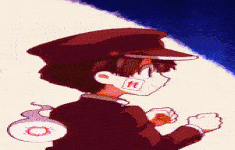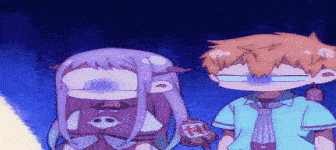Among Hayao Miyazaki's films, My Neighbor Totoro (1988) holds a special place, not only for its simplicity, but for the way it manages to capture the purity of childhood and the magic of everyday life. Unlike other Studio Ghibli works that deal with themes such as war, environmental destruction or power, Totoro is a film about small joys, discoveries and the solace that imagination can bring in difficult times.
From the first minutes, My Neighbor Totoro envelops us in a warm atmosphere. The family's move to the countryside, the curiosity of the sisters Satsuki and Mei exploring their new home and the discovery of the little susuwatari (the "soot balls") create a feeling of nostalgia even for those who have never lived through this experience.
The film's greatest emotional asset is the relationship between the sisters. Miyazaki portrays in an incredibly authentic way the dynamic between an older child, who tries to be responsible, and the younger, full of energy and curiosity. The moment when Mei finds Totoro and cuddles up to his furry belly is one of the most tender moments in cinema—it conveys an almost physical comfort, like a warm hug.
The scene at the bus stop, where Satsuki and Mei wait in the rain and Totoro appears holding his umbrella, is another moment of pure magic and simplicity. Without words, just gestures and expressions, the film shows us the beauty of small encounters and the enchantment of simple things, like the sound of drops falling on an umbrella or the surprise of seeing a giant being by your side.
But My Neighbor Totoro also brings a dose of melancholy. The absence of their mother, hospitalized, is always in the background of the story. There is no explicit tragedy, but the girls' anguish is real, especially when Mei runs away to try to see her. In this moment, fantasy and reality intertwine in a subtle way, and Totoro stops being just a magical creature and becomes a true friend and protector.
Behind its simplicity, My Neighbor Totoro is a deeply symbolic film. Totoro is not just a magical forest creature, but can be interpreted as the personification of childhood and nature. He represents a world where imagination and childlike curiosity still reign supreme, a safe space where children can escape from the hardships of the real world.
The film’s relationship with nature is another strong point. The film does not have an explicit environmentalist message, like Nausicaä of the Valley of the Wind, but it conveys a deep respect for nature and rural life. The way the children play outdoors, the giant tree that serves as Totoro’s home, the magical scene of the plants growing—all reinforce the idea that nature is not just a setting, but a living being that interacts with and cares for those who respect it.
Another notable detail is the absence of a traditional conflict. My Neighbor Totoro has no villains, nor great challenges to overcome. The drama is subtle and everyday: the anxiety for her mother's health, Satsuki's responsibility to care for her sister, the fear of being lost. This kind of narrative, more contemplative and sensitive, is rare in children's cinema, but it resonates deeply with any viewer.
More than just a film, My Neighbor Totoro is a sensory and emotional experience. It reminds us of the importance of preserving our connection to childhood, of finding beauty in the little things, and of allowing our imagination to guide us through difficult times.
Totoro’s smile, Mei and Satsuki’s laughter, the deep rumble of the great forest spirit—all of these stay in our memories like a loving embrace from childhood, a reminder that even when we grow up, the magic never completely disappears. |


 |
|






